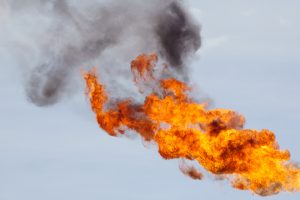 There is broad and growing agreement that the practice of routinely flaring natural gas in Texas must quickly come to an end. The reason for this is obvious. Setting fire to natural gas produced at oil wells is a significant waste of resources and releases vast amounts of carbon dioxide, methane and other harmful pollution into the atmosphere.
There is broad and growing agreement that the practice of routinely flaring natural gas in Texas must quickly come to an end. The reason for this is obvious. Setting fire to natural gas produced at oil wells is a significant waste of resources and releases vast amounts of carbon dioxide, methane and other harmful pollution into the atmosphere.
That’s why EDF and other environmental groups, investors, elected officials, communities and even some oil and gas companies are calling on the Texas Railroad Commission to end the practice as soon as possible.
What is Routine Flaring?
Sometimes discussions about routine flaring get bogged down in details, loopholes and special circumstances. But at its core, routine flaring and the need to end it are pretty simple.
Routine flaring occurs when an operator is producing oil (or gas condensates) from a well without a use or destination for the associated natural gas that is produced.
Because the oil and, sometimes, gas condensate, are more valuable, the operators may only want to capture those valuable products. Natural gas is less valuable, so many companies don’t want to capture it or don’t have an immediate plan to capture it. The simplest and cheapest solution is burning it. Routine flaring is, essentially, convenience flaring, and it has occurred across Texas during the shale boom.
A Simple Plan
We don’t think flaring should be considered a free waste disposal solution. Before getting a drilling permit from RRC, operators should be required to submit a plan for how the natural gas they produce will be put to beneficial use and demonstrate that the plan will be in place before drilling begins. And for existing wells, the RRC should require a plan that expeditiously phases out routine flaring, ultimately resulting in the capture of the gas or a shutting in of the well.
Simplifying the debate about routine flaring Share on XThe good news is that this basic operational standard is already being implemented by a number of oil and gas companies. But it’s imperative that it become the standard for the entire industry. And that will require action by the RRC.
Flaring happens for different reasons and some amount of it is unavoidable. For example, if equipment fails — either near a wellsite or further down the gas gathering system — flaring is safer for workers and nearby communities and better for the environment than just venting raw gas into the air. In these circumstances, flaring should be permitted for limited timeframes.
Certainly, there are ways to reduce planned and unplanned event driven flaring, too. For example, we need to examine whether flaring that occurs during well maintenance procedures is truly necessary and get creative in solving upsets and equipment failure in the midstream sector. These are complex issues that will involve incremental regulatory and operational changes.
But routine flaring — or convenience flaring — is much simpler.
Getting on a solid path toward ending routine flaring can happen now. We know what it is and we know how to end it. We just need the political will to get it done.









